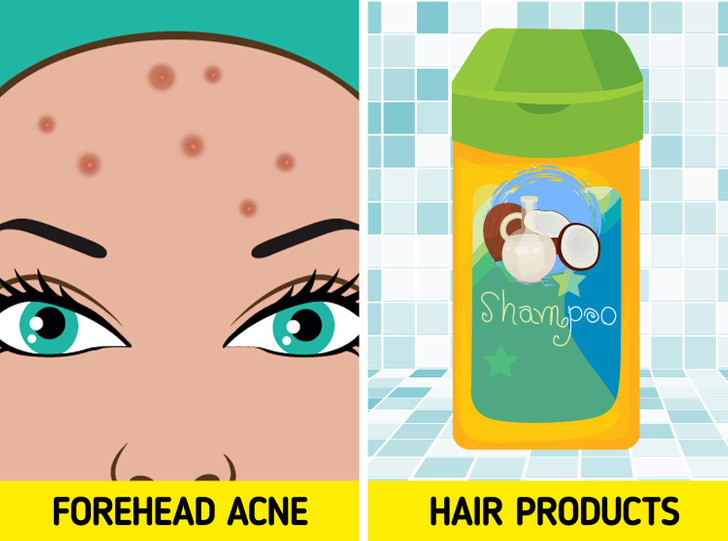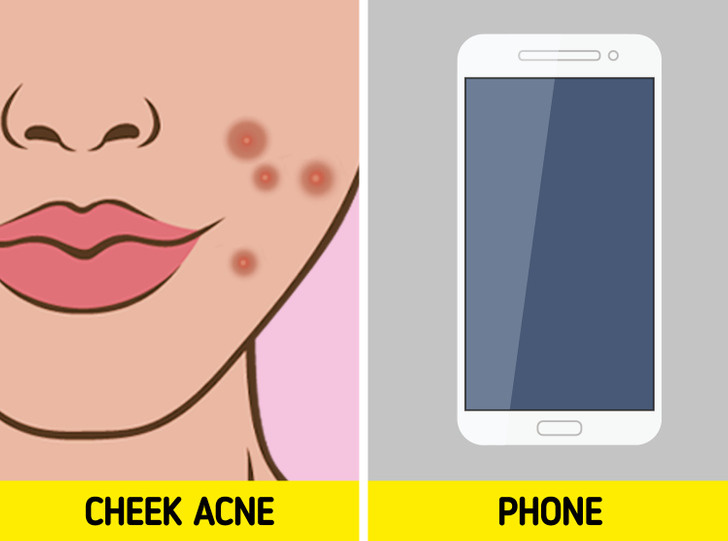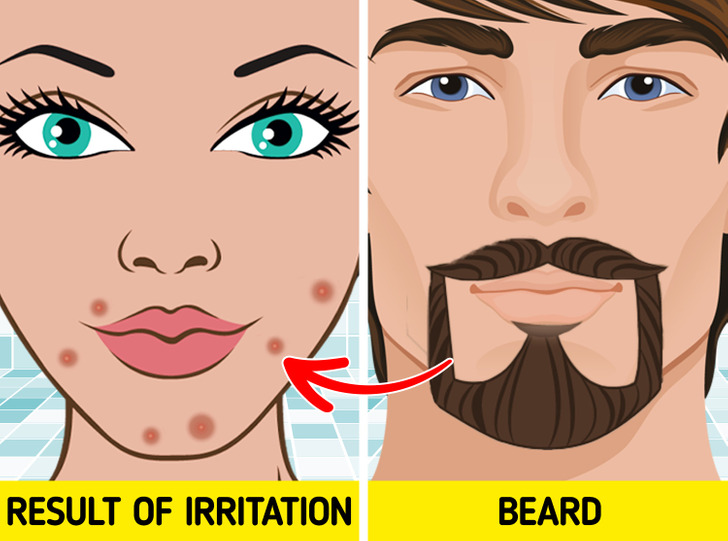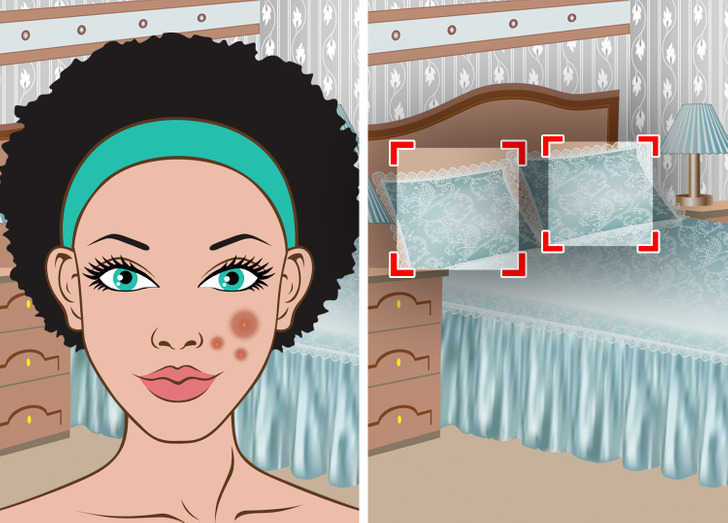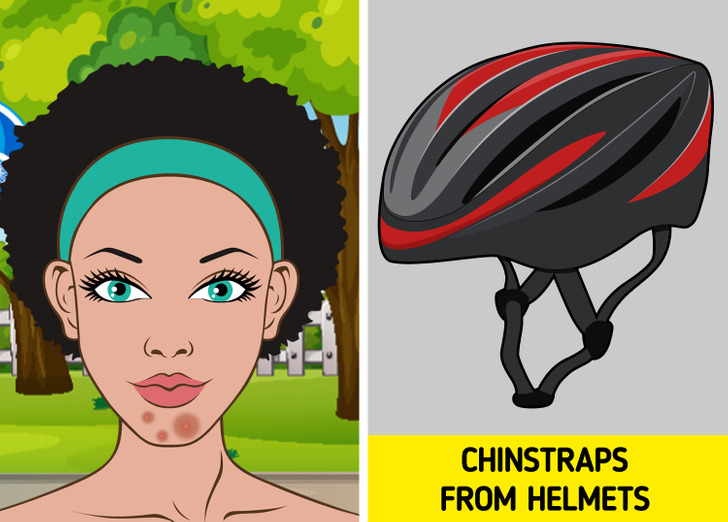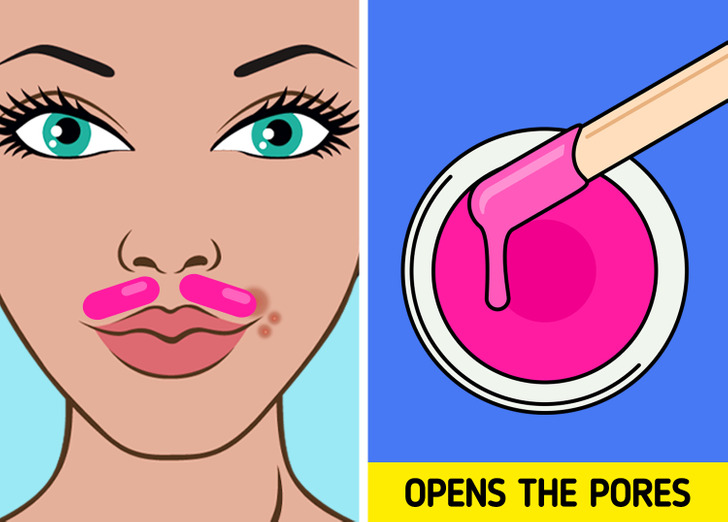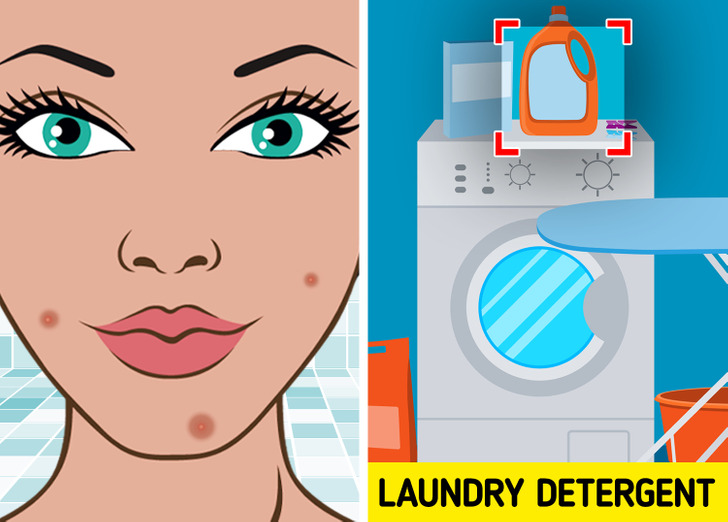8 Things That Are Causing Acne on Every Part of Your Face
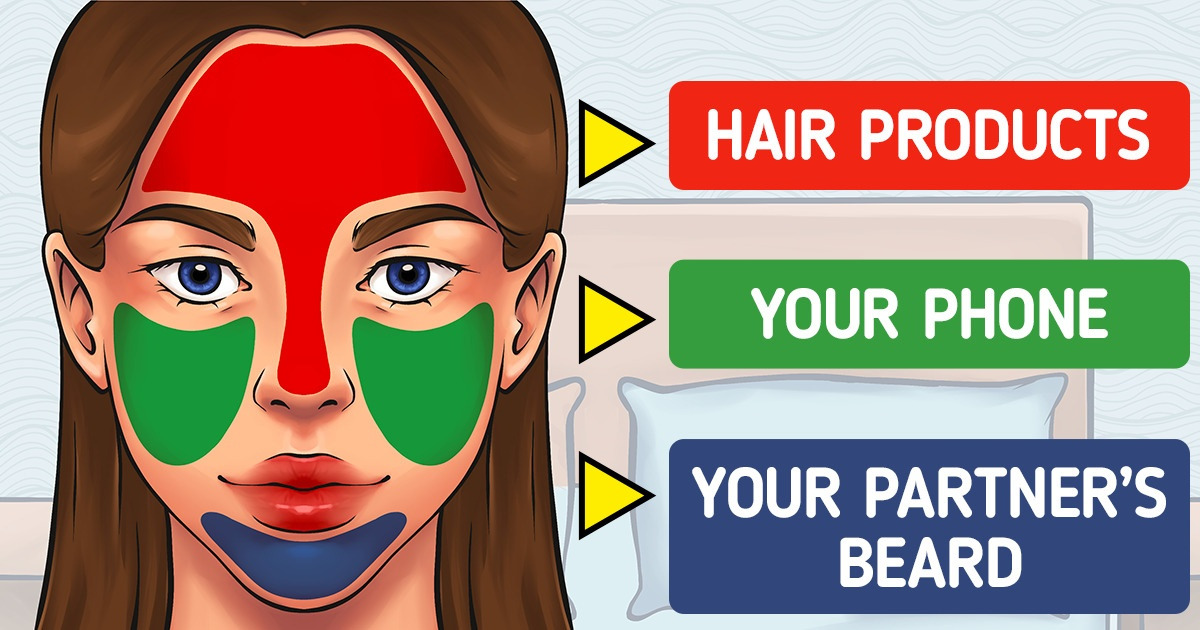
Our skin usually represents how our body feels on the inside but not having a clear face doesn’t always mean that something is wrong with our diet or that we have a hormonal imbalance. Sometimes we tend to miss the main reasons for facial acne, even if they are right under our nose. But that’s why we made a list of things we use daily that may be more harmful to our faces than we thought.
1. Hair products
Some hair products can be the main cause of acne around the forehead. When oily or waxy hair products spread to the nearby skin of the face, they can clog the pores. This can cause acne breakouts and can be common in both genders with any skin type.
- How to prevent it: Use hair products that don’t contain cocoa butter or coloring, and shield your face when using dry shampoos or oily hair sprays. Wash your hair more often and try using a gentle cleanser.
2. Phone
3. Your partner’s beard
The friction that results from rubbing a smooth face against a scraggly beard or mustache encourages the creation of facial oil. Both beard burns and skin blemishes could result from this approach. Bacteria that cause the breakouts may also be present in the partner’s beard. If people don’t wash their faces every day, bacteria can accumulate and then spread to your face’s extremely delicate skin.
- How to avoid it: Ask your partner to keep their face freshly shaven or let them grow out their beard completely. Facial hair gets softer the longer it grows, and using conditioner can soften it even more.
4. Razors
Sometimes, shaved skin might lead to outbreaks. Certain shaving lotions and oils have the potential to block pores, and using a dirty razor allows microorganisms to enter the skin. It might occasionally aggravate sensitive skin, resulting in pimples.
- How to avoid it: Try out various razors to see which is kinder to your skin. To reduce friction, use a mild shaving cream or soap and water first.
5. Pillowcases
Dirty phones, used pillowcases, and other habits like touching your face can all contribute to acne on one side of your face. Unwashed pillows can collect facial oils, skin debris, and hair products. These can lead to blockages and infections that result in acne when pressure is applied to your skin, especially if it is sensitive.
6. Clothing that has a chin strap
Sensitive skin can be easily triggered if you wear a helmet with a chin strap or a tight-collared shirt. The dirt on those materials constantly spreads to your face and may cause jawline acne, which is a result of irritation.
7. Facial hair removal
Although waxing itself doesn’t lead to breakouts, it can lead to certain microorganisms entering the open pores. An allergy may occasionally cause pimples, but it is also possible that a portion of the skin’s surface may be lost during a waxing procedure, leaving the pores exposed. If anything contacts the skin during this period, it may result in pimples.
- How to prevent it: Get rid of dead skin cells by exfoliating, remove all the makeup and oil from the face, and don’t double dip the applicator into the wax pot.
8. Laundry detergent
Some laundry detergent ingredients may be too harsh for people with sensitive skin. As soon as you use your bath towels or your clothing after it’s been washed, your face may react to the residue left behind, which could cause a breakout. If the pimples appear after you’ve recently switched laundry detergents, the new product is likely the cause of your breakouts.
- How to prevent it: Choose a hypoallergenic detergent.
How do you manage to keep your face clear? Do you have any special skin care routines?
